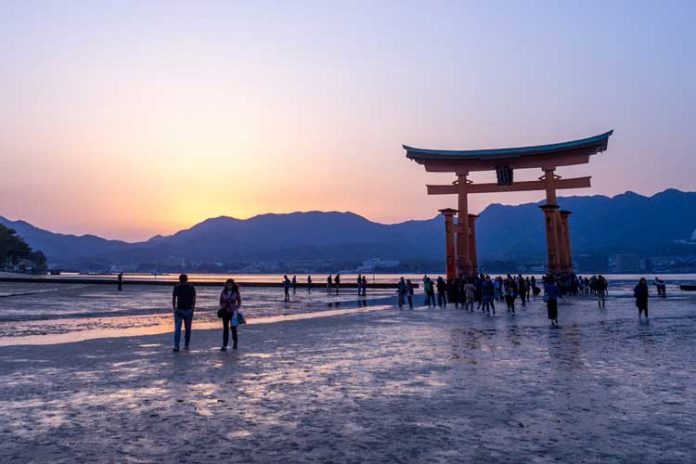Fallout debris from nuclear explosions consists of spherules and aerodynamically-shaped glasses, created aerially by high-velocity quenching processes involving materials melted and vaporized at temperatures in the order of 2000 °C.
In a new study by Berkeley Lab and UC Berkeley, scientists found that the beaches around the Japanese city of Hiroshima are littered with minuscule glassy beads formed from debris melted by the atomic bomb blast.
During a sedimentological and microfaunal pilot study of the Hiroshima Bay, Japan, scientists collected 13 intertidal modern sand samples from six beaches to the East, South, and West of Motoujina Peninsula. They also collected samples from the surface to a depth of about 10 cm on the exposed beaches, where the recent faunal components accumulate.
The beads, which no one seems to have noticed until now, apparently formed in the atomic cloud from vaporized concrete, marble, stainless steel, and rubber, among other materials of daily life in Hiroshima. The researchers estimate that a square kilometer (0.4 square miles) of beach sand collected from a depth of about 4 inches would contain about 2,200 to 3,100 tons of the particles.
Mario Wannier, a retired Berkeley Lab geologist who led the study said, “This was the worst man-made event ever, by far. In the surprise of finding these particles, the big question for me was, you have a city, and a minute later you have no city … Where is the city? Where is the material? It is a trove to have discovered these particles. It is an incredible story.”

On the morning of Aug. 6, 1945, the atomic bomb blast that devastated Hiroshima killed 70,000 or more people, with a final death toll accounting for the associated radiation effects possibly exceeding 145,000. The bomb and resulting firestorms mostly leveled an area measuring more than 4 square miles and destroyed or damaged an estimated 90% of structures in the city.
These glass beads were primarily detected in 2015 at about four miles from Hiroshima while combing through beach sand. Wannier initially thought that the particle might be the result of meteor impacts, such as the one that killed off the dinosaurs 66 million years ago. Thus, he collaborated with UC Berkeley mineralogist Rudy Wenk to further study the beads using electron microscopy and X-ray microdiffraction at Berkeley’s Lab’s Advanced Light Source.
Wenk detected different types of chemical compositions in the samples, including aluminum, silicon and calcium; microscopic globules of chromium-rich iron; and microscopic branching of crystalline structures. Other beads were composed mostly of carbon and oxygen.
Wenk said, “Some of these look similar to what we have from meteorite impacts, but the composition is quite different. There were quite unusual shapes. There were some pure iron and steel. Some of these had the composition of building materials.”
“The experiments and related analyses determined that the particles had formed in extreme conditions, with temperatures exceeding 3,300 degrees Fahrenheit (1,800 Celsius). The composition and formation led the researchers to conclude that they were formed in the bomb blast.”
“It was quite fascinating to look at all of these materials, noting that the beads may be radioactive. “What we hope is to get other people interested in looking at this in more detail and is looking for examples around the Nagasaki A-bomb site.”
The study is published in the journal Anthropocene.
